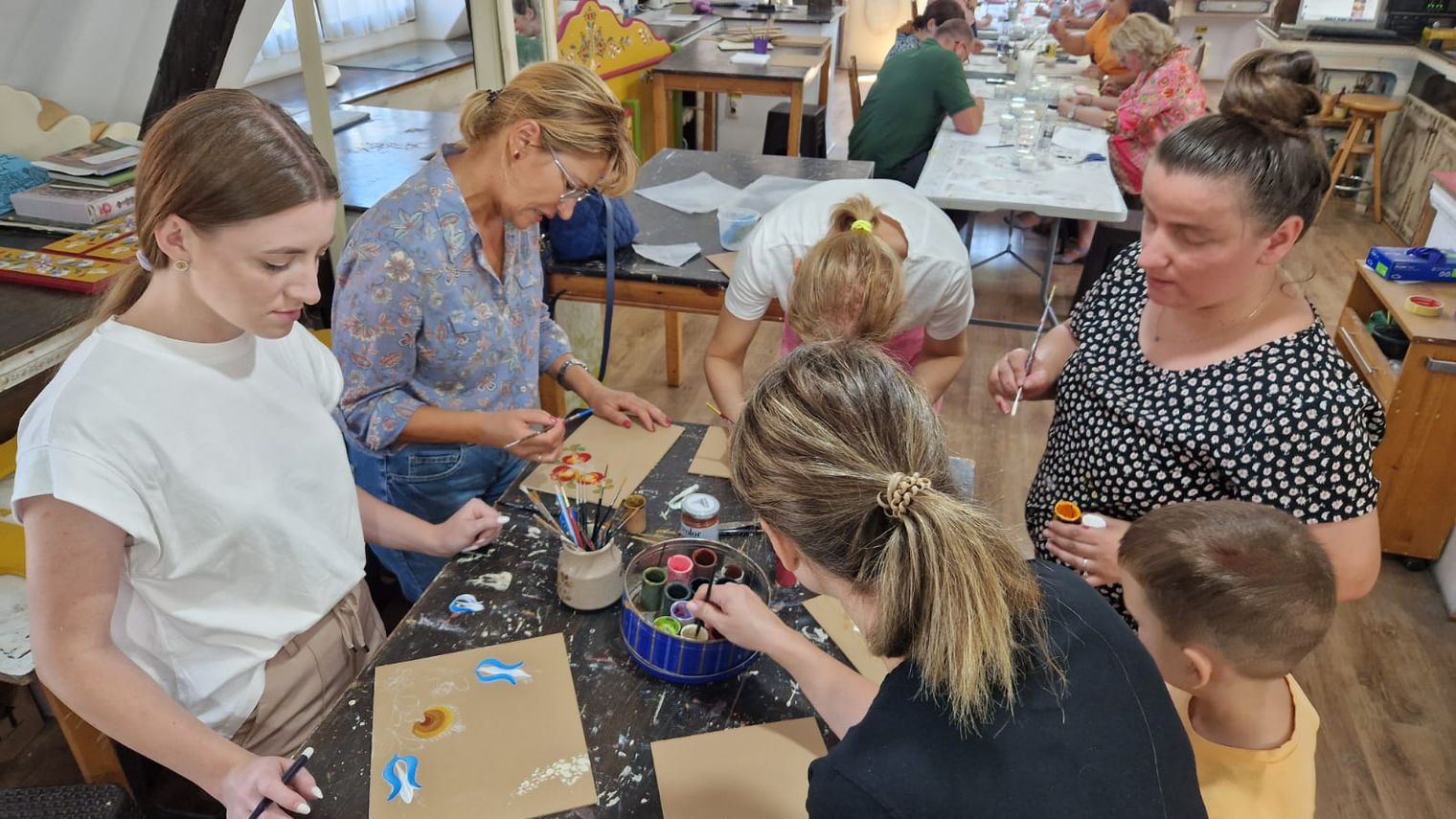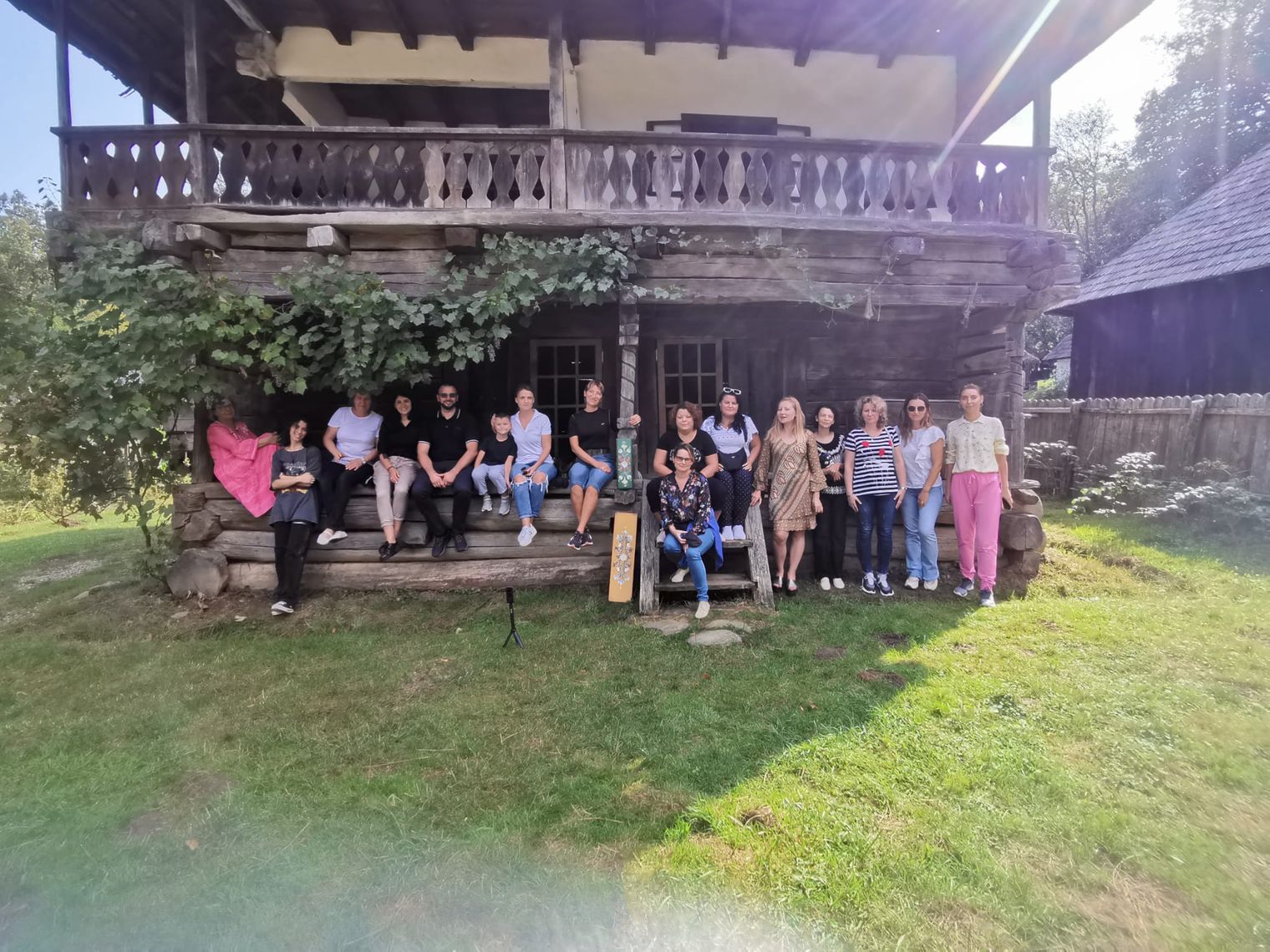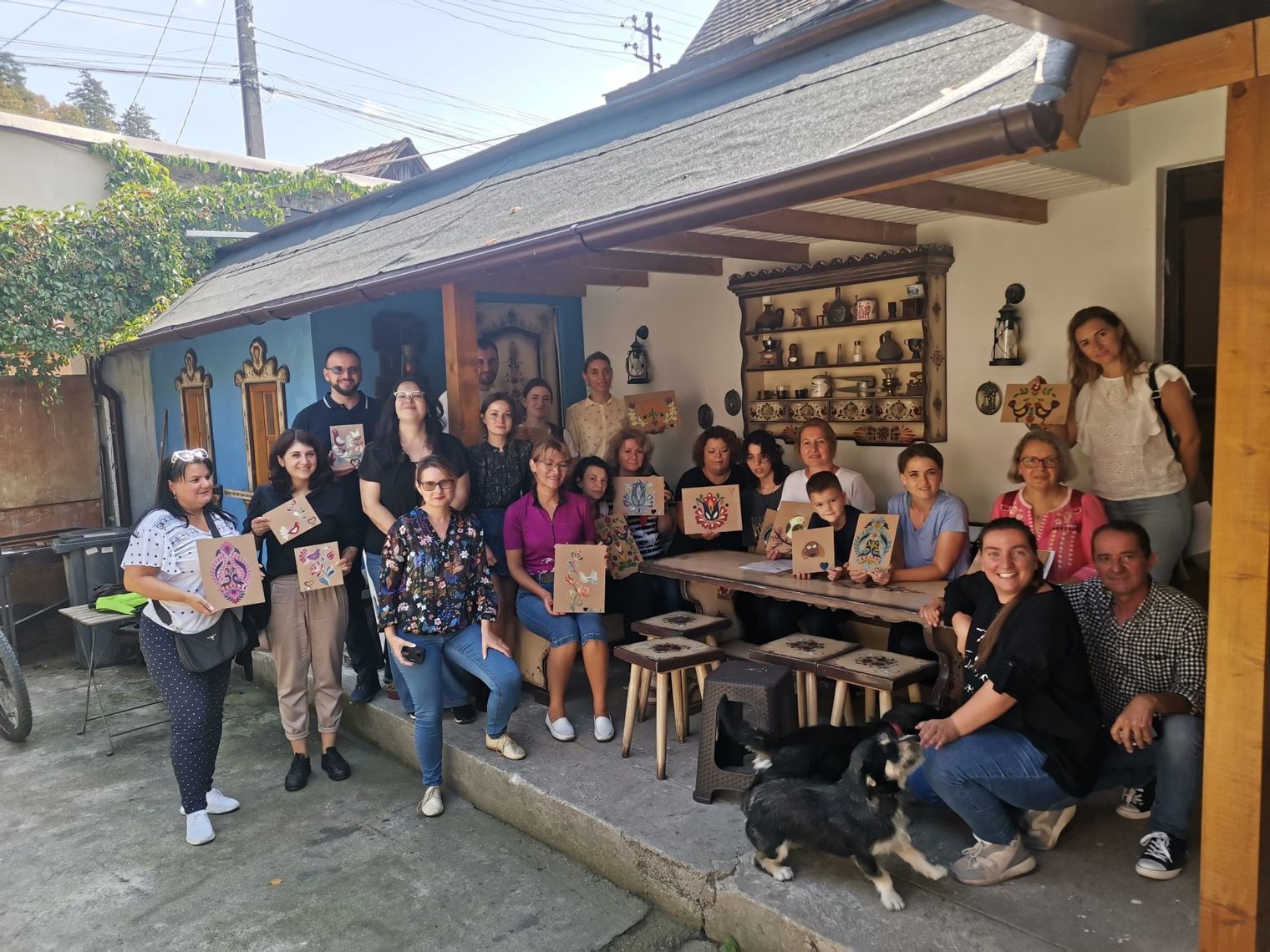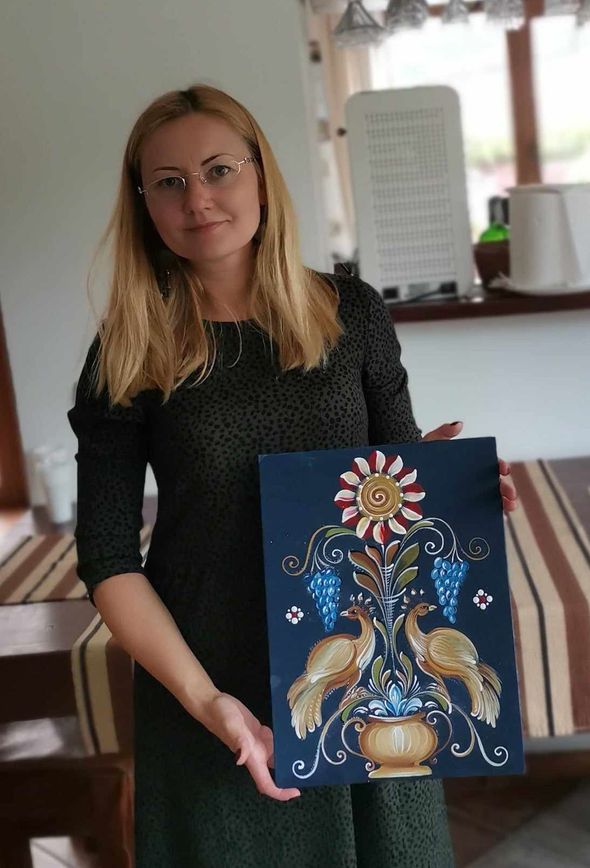Romania

Between August 28th–September 1st 2023 Asociația Perseidele (The Perseids Association) organized and implemented the pilot activity within our Erasmus+ project. During three days of practical workshops, the 18 participants discovered an element of the intangible heritage from Transylvania, namely the painted furniture in the style of Transylvanian Saxons. The workshop was practical because it took part in the most famous studio in Romania for the making of painted furniture, namely the one belonging to Mr Mircea Ungurean situated in Cisnădioara, Sibiu County. This company has preserved and carried on this tradition for more than 25 years. With the help of the four painters, Carmen, Oana, Maria and Victoria Ghilaș, the participants experimented with wood painting in the traditional Saxon style.
The first day began with a tour of the workshop, first with the carpentry part. The wood frames are made by the specialist in carpentry and then the wooden elements are hand-painted separately, piece by piece. The activity started with a demonstration session made by Maria who explained step by step the wood painting technique, the way they choose the patterns from their database, how they adjust the size depending on the type of the furniture, how they prepare the colours, the type of colours they use, how they print the floral patterns on the wood—using chalk powder and paper—how they create their own patterns on paper, how they correct some errors, etc. After the example session the participants were divided into three groups and each was supervised by one of the painters Carmen, Oana and Maria. Each participant got a piece of wood, colours and brushes and chose a pattern to work on. The colourful pattern was first printed on a piece of paper and the participants copied it on transparent paper. Then, they transferred it on the piece of wood by tracing its shape using the chalk powder. After that, they started painting it, supervised and helped at every step by the three painters, Oana, Carmen and Maria. During the first day of practice they managed to accomplish a full image of a floral pattern on wood. The participants had no previous experience of carrying out this traditional technique before taking part in this workshop or any other information about it, the target group coming from other parts of the country where this type of intangible heritage was not known. Mr Mircea Ungurean provided free access to the whole inside space, including his house painted in a traditional Saxon style which seemed to be more of a museum than a residence. Thus, the participants could observe the whole house.

During the two first days the participants got familiar with this technique and they became more proactive and could ask questions of the painters, in a scenario more similar to a focus group. The question session was useful as six people from the target group worked in the art field and they were interested in finding connections between the technique of Saxon painted furniture and their activity. After the participants understood the technique and its usage, they practised it for one day and a half. They spent the other half of the day visiting the biggest open-space traditional museum from Sibiu— namely ”Astra” Museum—where they were accompanied by the painter Victoria Ghilaș. Victoria made a demonstration in the yard of a traditional house within the museum. She painted one of the oldest Saxon ornaments and provided theoretical information about its origin, symbols, colours, the evolution of the artistic style and the flow of cultural influences within Transylvania. The participants asked questions. They benefited from Victoria’s explanations after they had already become familiar with the technique of painted furniture from Oana, Carmen and Maria, but they either had not understood very well the elements they had painted, or had not been aware of the deep significances of the floral or zoomorphic patterns, or they had not really enjoyed painting on their first attempt, considering the patterns as being anachronistic. After the workshop with Victoria Ghilas, they changed their perspective when considering the matter of the intangible heritage represented by the Saxon painted furniture as they started making connections between the technique and the people who improved it, the history of those times and of the Saxon culture and civilization. Victoria Ghilaș is a talented painter who wanted to prove to the participants that cultural heritage can be transferred using various methods and environments, in a workshop, but also in an ethnographical museum or even in the dining room of a boarding house. Thus, she provided a learning session in the dining room of the boarding house and made a practical demonstration of the technique with one of the oldest Saxon paintings. The demonstration lasted one hour and during this time she proved that the painting can be practiced everywhere as long as you have the necessary experience and you enjoy what you do.

During the three days, the participants practised some other ornaments in geometrical or animal shape and this time they managed to finish the work in a shorter time as they had already gotten used to it. Moreover, they had already found out more information with Victoria’s help about the history and philosophy of the people who created this art and learnt how to fully appreciate it as they understood where it came from and what were the sources of inspiration. Day 3 ended with the interview session, each participant came willingly to Mr Mircea Ungurean’s museum-dining room and shared their point of view about this experiential workshop. Our painters Oana, Carmen, Maria and Victoria, as well as Mr Mircea Ungurean, the owner of the workshop, also took part in the interviews.
Meet the art educator… Victoria Ghilas
Victoria was born in the Republic of Moldova on 10 May 1979, in 1997 she came to Romania to study. When she was in her third year at the Simion Barnutiu Law Faculty in Sibiu, Victoria joined certain student and artist circles at the Andrei Saguna Faculty of Theology. It was then that she began to be attracted to iconography and did her best to work on church painting sites to learn painting techniques. After graduating from law school, Victoria took the entrance exam for the Faculty of Theology, Heritage section. There she studied drawing, modeling, history of art, traditional techniques and other subjects in addition to theological subjects. Immediately after graduation she was contacted by the owners of a painted furniture workshop who offered her a job contract. She worked in this painted furniture workshop for 5 years, starting as a painter and working her way up to the position of art director. Since 2010 he started working on his own, trying to tackle several styles of decorative art, relying on tradition, European and Oriental decorative arts but also his own creativity. Victoria still paints icons, murals, paintings and furniture painted in the Saxon style. Her talent allows her to tackle all these genres.
